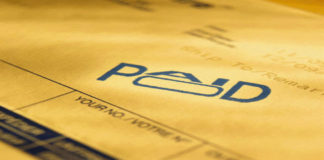 Tax season provides us the perfect opportunity to set up and establish an emergency fund with our income tax refund. Because this is money that has been set aside throughout the year due to our income tax deductions exceeding our withholdings. It is also money that has been accumulated outside of our monthly budget, expenses and savings goals.
Tax season provides us the perfect opportunity to set up and establish an emergency fund with our income tax refund. Because this is money that has been set aside throughout the year due to our income tax deductions exceeding our withholdings. It is also money that has been accumulated outside of our monthly budget, expenses and savings goals.
Therefore, our income tax refund provides us the perfect opportunity to use this lump sump payment to establish and fund our emergency fund. Unfortunately, there are a million businesses all advertising and competing for our income tax refund. As a result, it is very easy for us to be enticed into spending our income tax refund without ever considering the possibility of saving it for a rainy day or when an unforeseen or unplanned expenses occur in our life.
Without an emergency we must resort to using our credit cards or securing a consumer loan to cover the costs of these unforeseen expenses. Unfortunately, It is our lack of personal savings that forces us to use our credit cards or obtain a personal loan to pay for these unplanned expenses that we incur in our lives. When we charge these expenses it dramatically impacts our overall debt, increase the costs of these expenses due to the interest we pay over time, and also reduces or eliminates our ability to save money. An emergency fund is a simple but effective financial solution.
Therefore, maybe this year we want to consider saving our hard earned money from our income tax refund and using it to set up and establish our own emergency fund. An emergency fund will provide us the peace of mind that we have some money set aside, a fall back plan in case of an emergency. Why is this so important? Because by eliminating the need to utilize credit cards for unforeseen expenses we can focus on limiting our use of credit. By limiting our use of credit we can focus our efforts on becoming debt free and also fund our savings and retirement goals.
Here are some tips to help you set up and fund an Emergency Fund
How to Fund Your Emergency Fund Every Month – The key to funding your emergency fund is controlling your spending. All of us can free up the cash we need to fund our emergency fund if we take the time to track all of our expenses for 30 days. We can also look for creative ways to reduce our discretionary lifestyle expenses for lattes, dining out, shopping sprees, etc. We can also look for ways to live more frugally. If we are willing to make the effort,we can find enough cash to start funding our emergency fund every month.
How Much Cash? Many experts recommend keeping three to six months living expenses in an emergency fund. This is the ultimate goal. However, this may seem like an overwhelming goal to someone just getting started establishing an emergency fund. The key is to start small with your income tax refund and then commit to a specific amount every month. The most important point is to commit to establishing a cash cushion and funding it every month. This discipline and commitment will pay significant dividends when an unforeseen or unexpected expense arises.
Where to Keep Your Cash – It is vitally important to set aside this cash in a separate account where you will not be tempted to spend it. Remember, an emergency fund is only for unforeseen and unexpected expenses. Therefore, this money must always be available for you to cover these expenses at anytime without using your credit cards. Therefore, I suggest that you set up a separate account at a different financial institution from your normal bank accounts. This will prevent you from easily transferring the money to another account. Select an account type like a savings account or a money market account that does not put your money at risk.
We hope you have benefited from this article on emergency funds. If so, leave a comment. In addition, we hope you will also follow Fiscal Literacy on Twitter & Facebook or sign up via email to receive our free personal finance, news and updates.
Copyright © 2012 FiscalLiteracy.com, All Rights Reserved
Please take a moment and share this article on Twitter or Facebook. Thank You..












